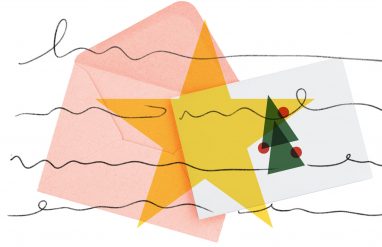Throughout grade school, your kids may be asked to write book reports about fiction and nonfiction books they’ve read. These assignments can seem daunting—it’s challenging to write a short summary about something as long as a book!
But when you break it down, writing a book report is not so different from other types of informational writing.
A book report is an informational essay summarizing the events and important themes and facts of a text, either fiction or nonfiction. Generally speaking, a book report is a description of the text from an objective point of view. In other words, you’re not giving your personal opinion on the book.
In order to write a good book report, you have to provide enough information to give the reader an understanding of the book without giving so much information that it’s overly long and, well, boring. It’s all about balance.
We’ve broken down how to write a top-notch book report step-by-step, so you can guide your kids through the process with ease.
1. Read the book
There’s no shortcut to writing a book report. You have to read the book first. Resources like CliffsNotes can be helpful as a support, but they are no substitute for the real thing. If you’re reading a book you will be writing a book report about, it’s good to take notes as you read.
Ways to take notes in the book itself (often called annotating):
- underlining important events
- circling main ideas or arguments
- highlighting when a new character is introduced
- drawing a star at moments of conflict
If you can’t write in your book, you can always use sticky notes (that can be removed easily) or take notes in a separate notebook as you read. If you’re using this method, be sure to keep track of the page numbers in your notes (e.g., new character: Timothy, friend of Sandra, p. 7).
2. Outline your book report
Preparing an outline before you write is important for any kind of informational writing, but especially when it comes to book reports. If you dive right in to writing a book report, you risk missing important details.
The kind of outline you need will depend on the kind of book you’re reporting on. If you’re writing about a fiction book, like a mystery novel or an adventure, your book report will focus on summarizing the plot, important characters, and sometimes the themes of the book. If you are writing about a nonfiction book, like a history, you will want to focus on the important facts and arguments in the text.
Your outline will also depend somewhat on the assignment. Some book reports are long, others are short. Some focus more on plot, others want to know more about characters or setting. Make sure your outline includes the specific details that the assignment asks for. And, of course, feel free to use our fiction and nonfiction book report outlines below to help you get started. That’s what we are here for.
Ideally, for every part of the outline, you should have a specific example or citation from the book to back it up.
Fiction book report outline:
Paragraph 1: Introduction
- Name of book
- Author
- Main character(s) and short description
- Setting(s): where and when the story takes place
Paragraphs 2–3: Summary
- Conflict
- Rising action: what happens before the climax
- Climax: the most tense, action-packed, or pivotal part of the plot
- Falling action: what happens after the climax
- Resolution: how the conflict is resolved
Paragraph 4: Analysis
This is where you should include the specific analysis the assignment is asking for. For example, some fiction book reports might require additional information about or insights into:
- characters
- themes
- setting
Paragraph 5: Conclusion
- Summarize the moral or resolution of the story
- Would you recommend this book? (optional)
Nonfiction book report outline:
Paragraph 1: Introduction
- Name of book
- Author
- Main idea or claim of book
Paragraph 2–3: Summary
- Description of how the book was organized
- Main fact 1
- Main fact 2
- Main fact 3
Paragraph 4: Analysis
This is where you should include the specific analysis the assignment is asking for. For example, some nonfiction book reports might require additional information about or insight into:
- the people featured in the book
- comparing and contrasting the book to another book
- what you found most interesting or surprising
Paragraph 5: Conclusion
- Would you recommend this book? (optional)
3. Write your book report
Once you have your book report outlined, writing it can be a snap. It is just like most other informational essays. Use mostly declarative sentences. Describe things from an objective point of view. In other words, back up your ideas with examples, quotations, and citations from the book itself.
Remember to always use quotation marks when you are citing the book word-for-word. Here are some guidelines on MLA style citations (which is just one style of making citations, but it’s a very common one!) Don’t use too many quotes, though! You should try to use your own words as much as possible.
Also try to incorporate transition words and phrases into your writing. Some examples are:
- at first
- then
- over time
- finally
- however
- for instance/example
Example outline and paragraph:
Have you read the classic Hatchet by Gary Paulsen? Even if you haven’t had a chance to yet, you should get the gist of it from our outline for paragraph 2 of our book report:
Paragraph 2: Summary
-
- Conflict: Brian’s plane crashes into a lake in the Alaskan wilderness when the pilot has a heart attack.
- Rising action: Brian learns to build a shelter and where to find food. He learns to survive in the wilderness.
Here’s how we wrote this paragraph in our book report:
In the beginning of the story, Brian is on a plane flying above the Alaskan wilderness when the pilot has a heart attack. The plane crash lands in a lake. Brian learns to build a shelter using a rocky ledge. He discovers how to find food that is safe to eat, like turtle eggs, and not safe, like certain berries. He also learns how to make a fire, which he calls “a hungry friend, but a good one” (p. 86). Over time, he learns how to survive in the wilderness.
We backed up all of our ideas with specific details, like Brian building a shelter using a rocky ledge. You might notice that we incorporated some transitions into our writing, such as also and over time. We also used a direct quote from Hatchet, inside quotation marks, to back up our detail about fire.
We didn’t include our own opinion about the book or the character Brian in our summary. Like every informational report, our goal is to be impartial. Just the facts.
And a pro tip: don’t plagiarize!
4. Edit your book report
Like any report, your first draft of a book report is never going to be perfect. We recommend reading through it a few times while you edit. Read carefully for:
- specific facts or details from the book to back up every example;
- logical flow: did you use transitions and complete sentences to help guide the reader?;
- and spelling and grammar mistakes.
You might also want to ask an adult, teacher, or friend to read over your book report before you hand it in. It can help to get another opinion about your work, because others often see things we might miss.
In summary
Writing a book report can feel like a big task. But you can make it easier by doing the following:
- take notes while you read
- prepare an outline
- write using transitions and specific examples
- edit carefully
Oh, and don’t skip actually reading the book. That part is really important …












